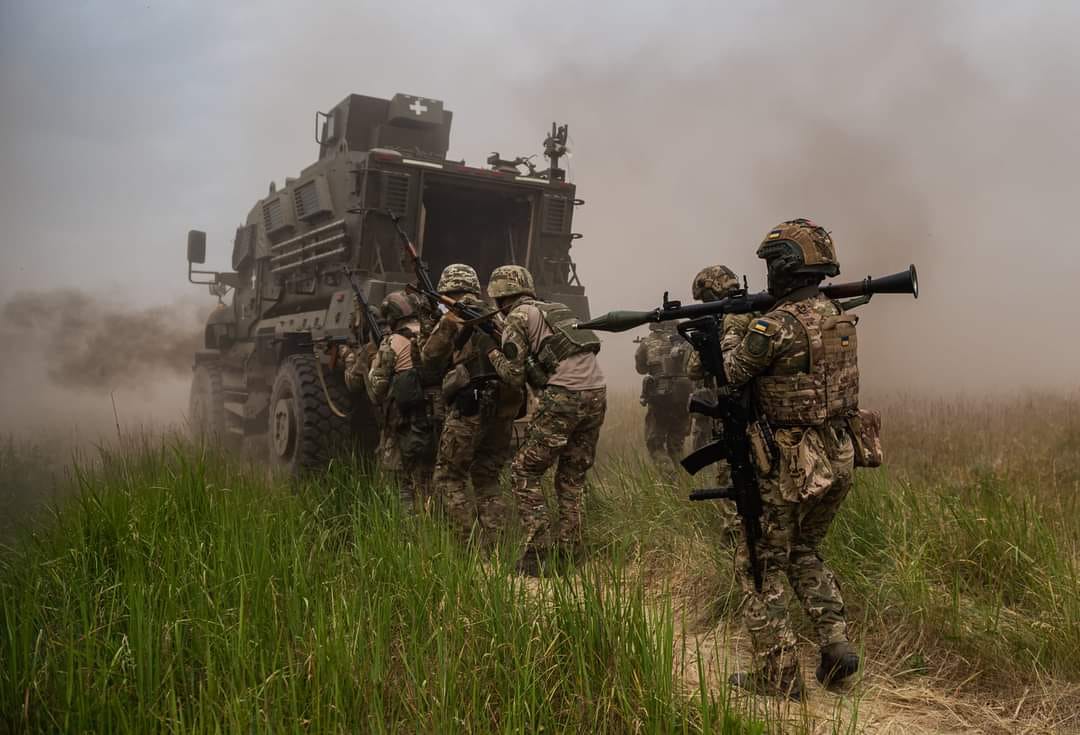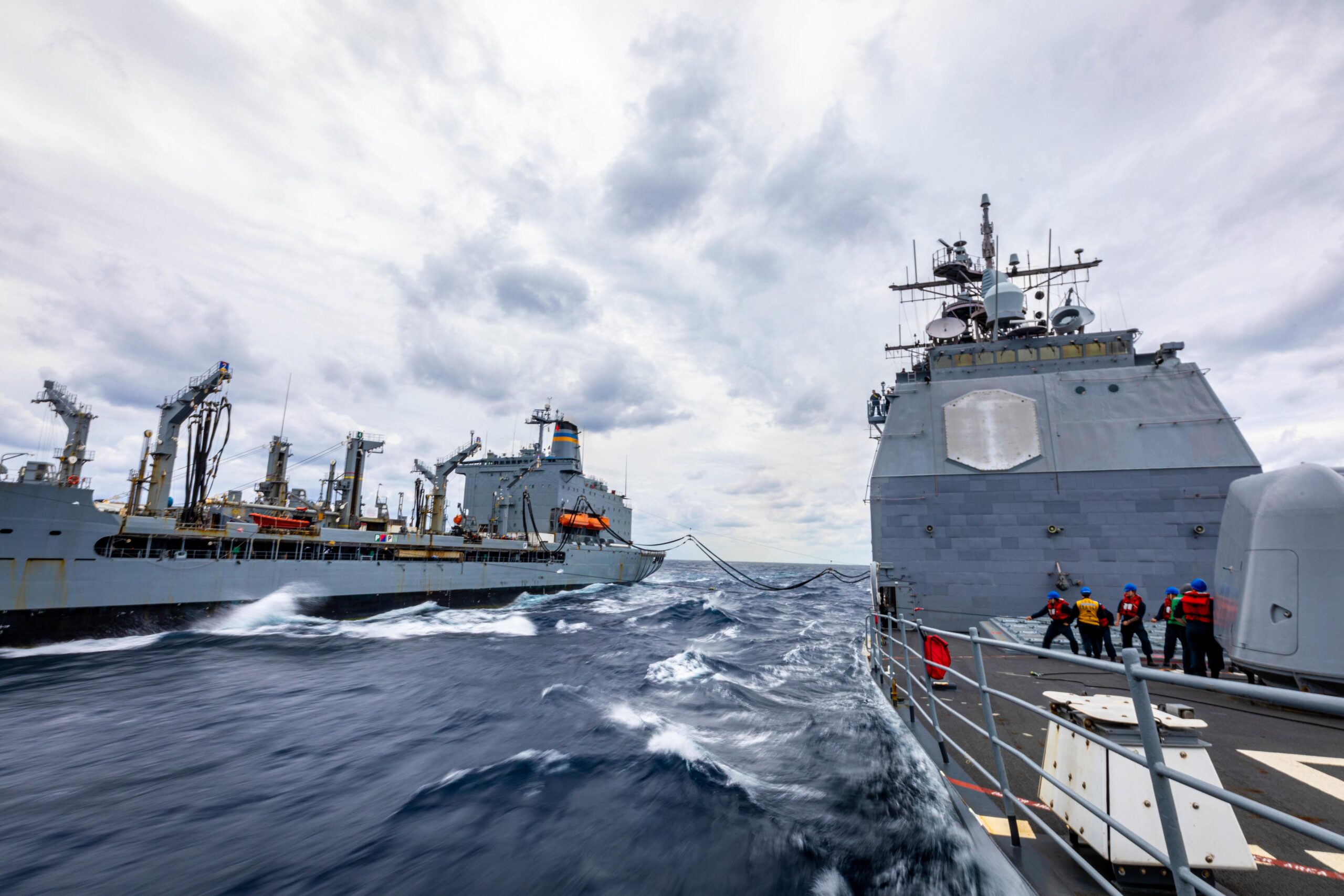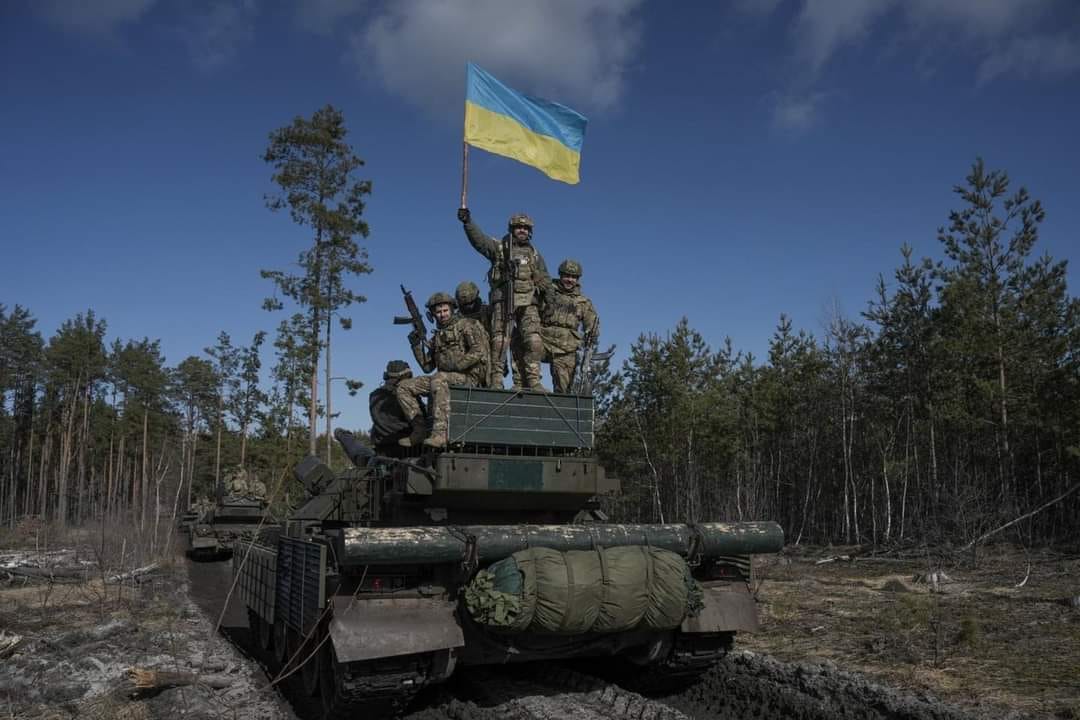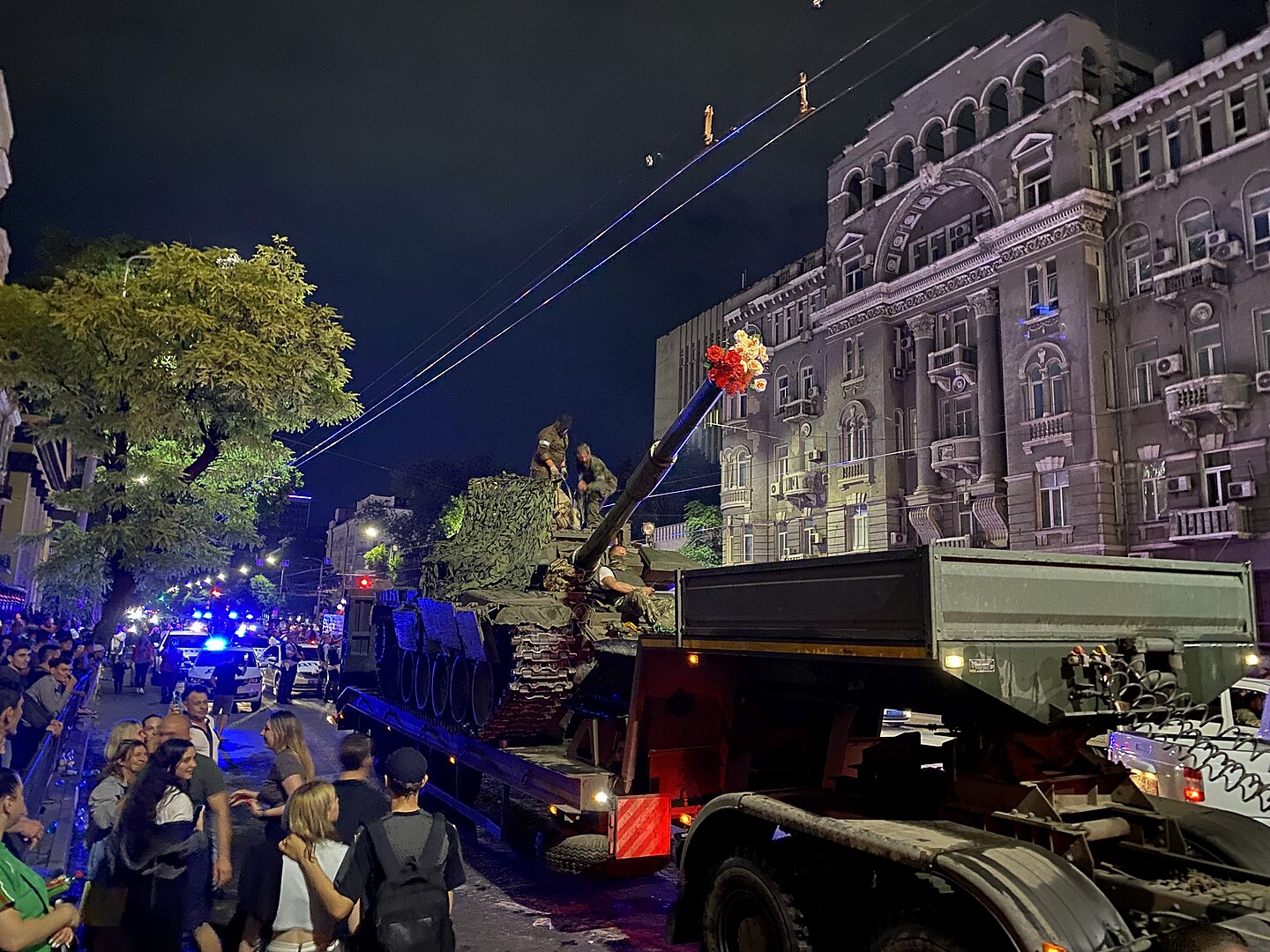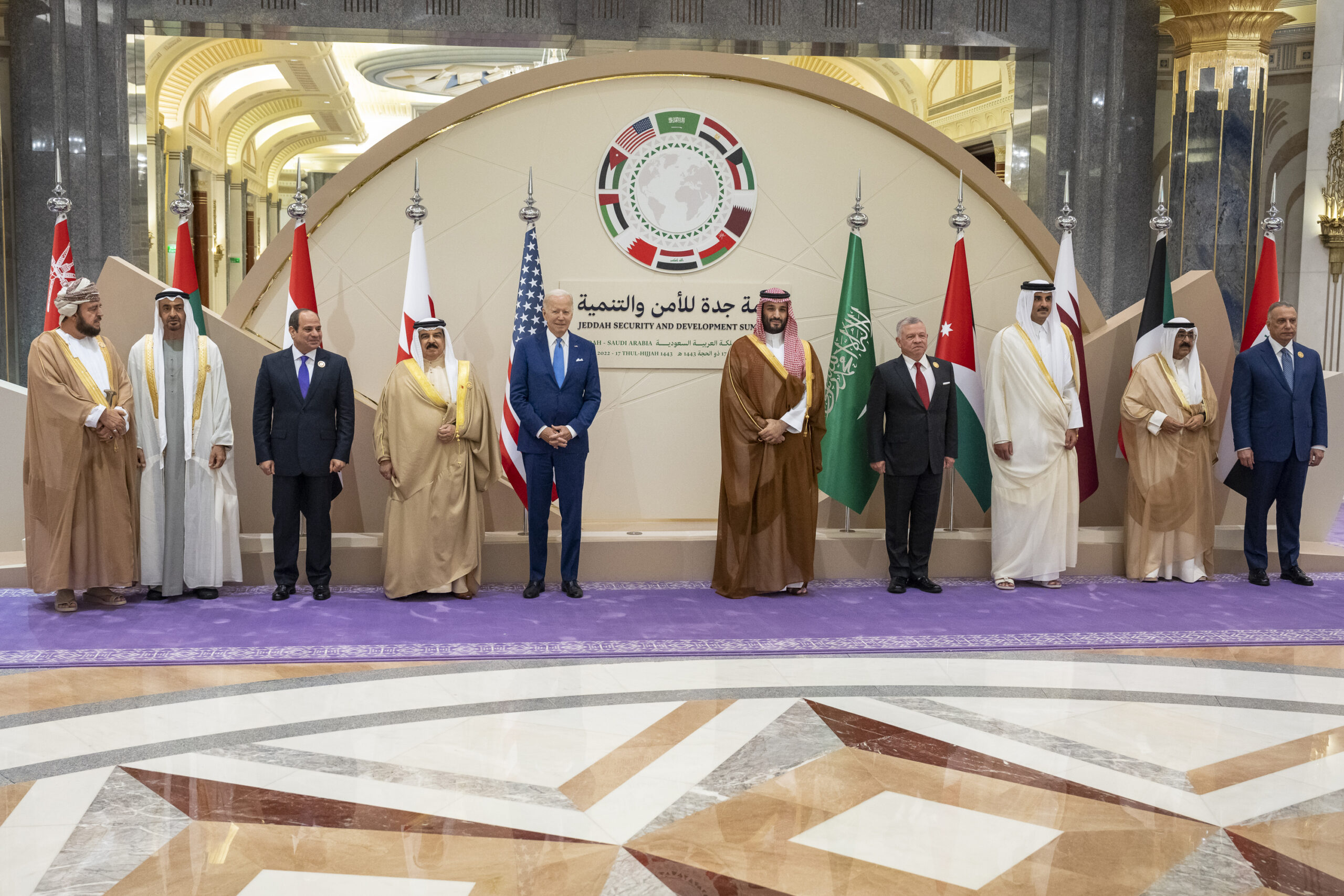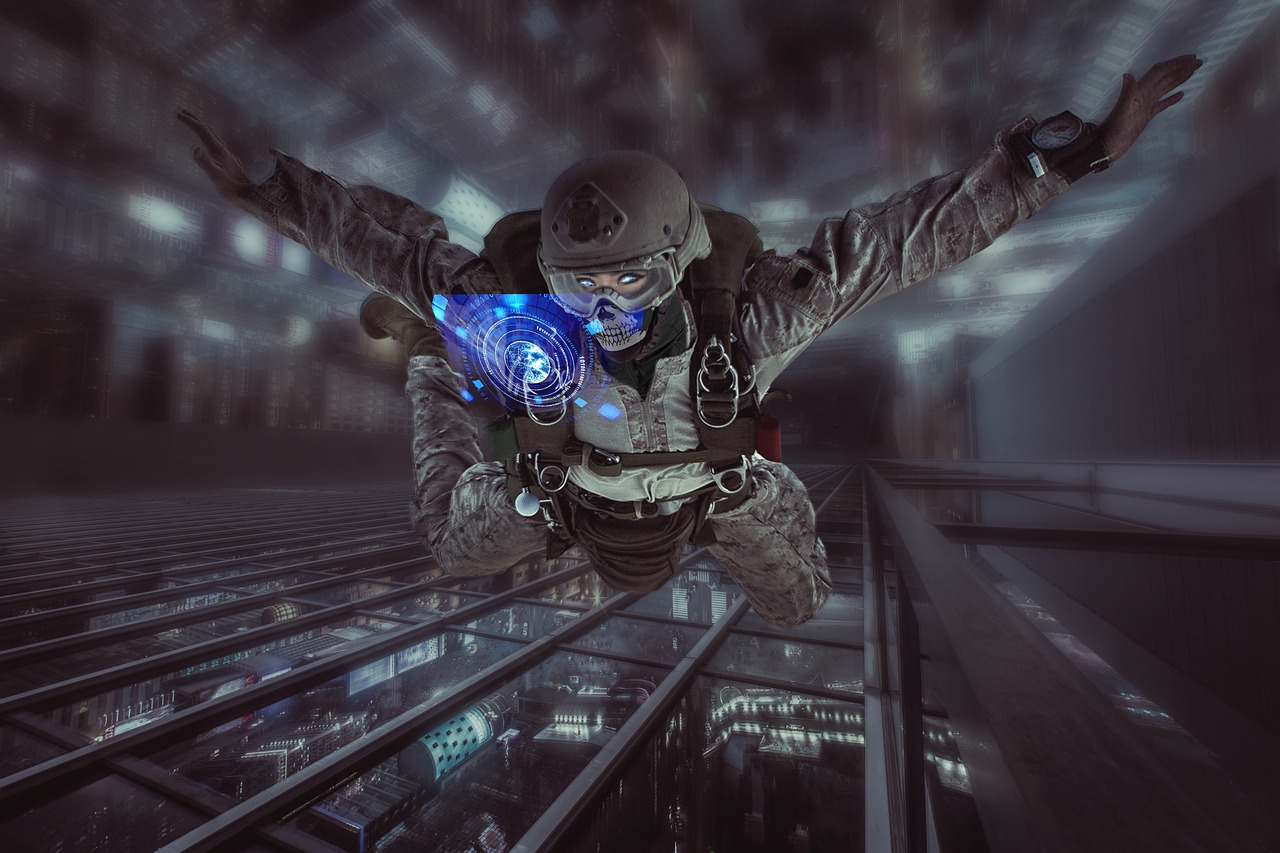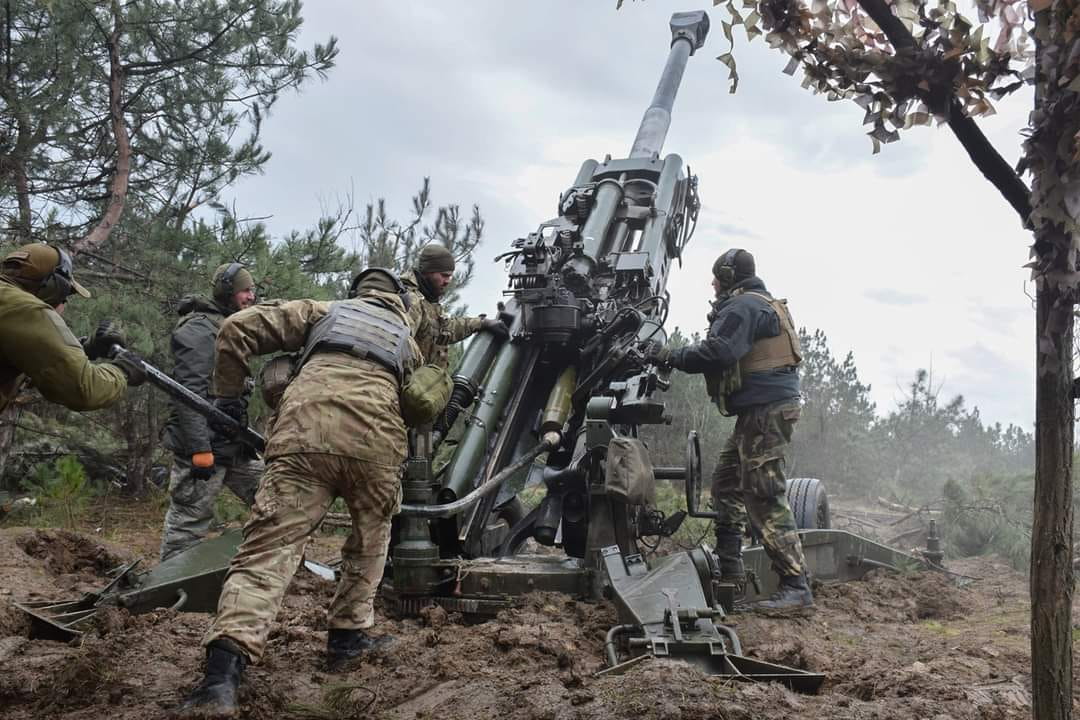Pre-Summit press conference
Autor foto: NATO
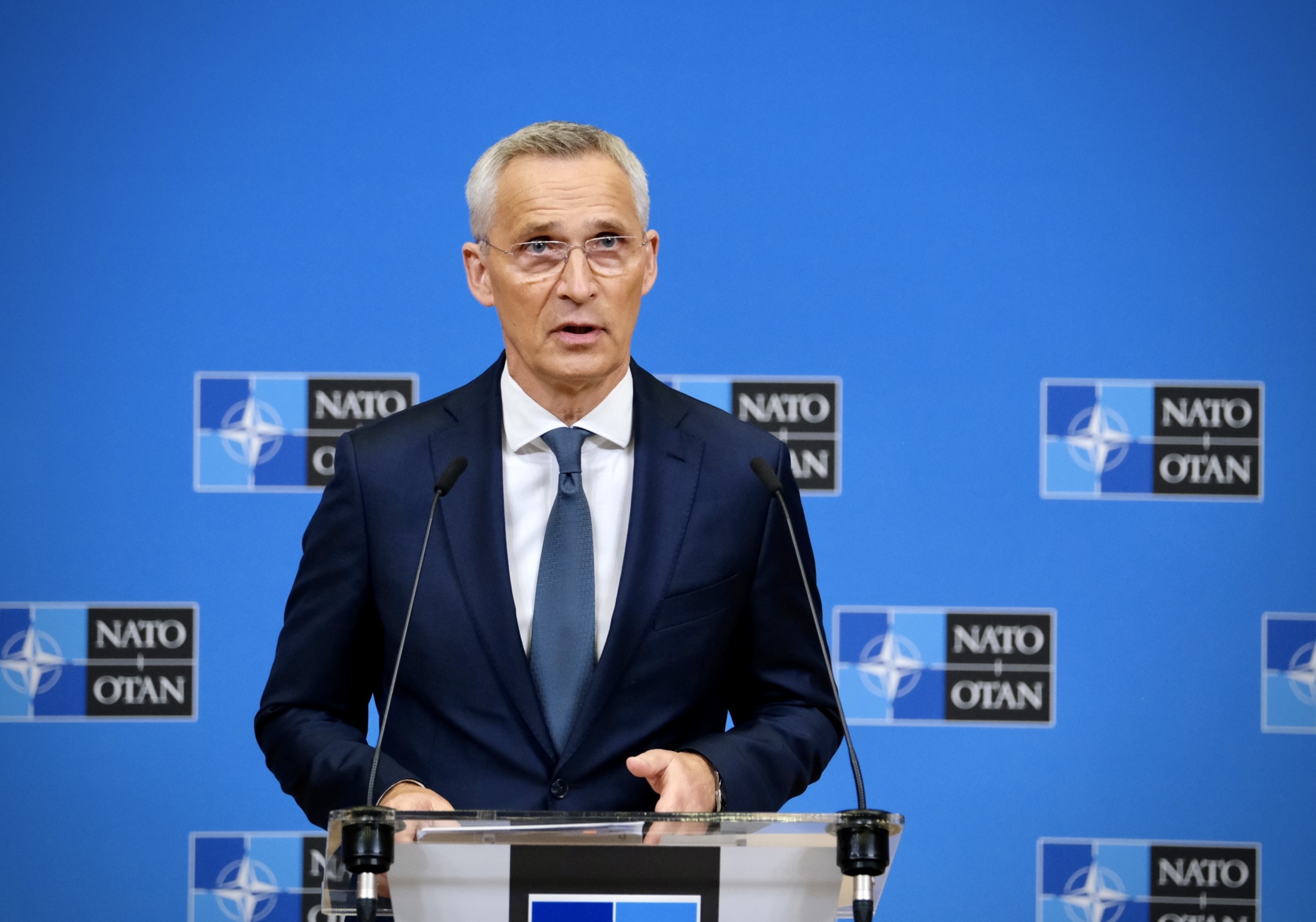
NATO summit in Vilnius – will it live up to expectations in comparison to other post-1990 summits?
8 lipca, 2023


Pre-Summit press conference
Autor foto: NATO
NATO summit in Vilnius – will it live up to expectations in comparison to other post-1990 summits?
Autor: Robert Pszczel
Opublikowano: 8 lipca, 2023
Pulaski Policy Paper no 32, July 08, 2023
NATO used to hold its heads of state and government meetings (summits) every few years. Now, due to the extraordinary challenging security situation (the ongoing war in Europe, the biggest since 1945) such gatherings take place de facto every year.
History of recent summits
In the post-Cold War period most NATO summits have paved the way for a dramatic adaptation of the Alliance. Many could justifiably be called historic. London Summit in 1990 opened the path to transformed Alliance. The 1994 Brussels gathering offered Partnership for Peace programme to former Warsaw Pact countries. The Madrid summit in 1997 decided, for the first time, to invite three countries which until 1990 had the misfortune of being on the wrong side of the Iron Curtain. The 1997 anniversary meeting in Washington codified major policy changes, including the ground-breaking military engagement of NATO in the Balkans, in a new Strategic Concept.
Living up to the symbolism of the venue, the Prague summit in 2002 welcomed another large group of members into its midst. The 2010 Lisbon meeting updated again the NATO doctrine, taking into account the counterterrorism focus of NATO at the time, and made (as it proved to be the final, due to Russia’s aggressive and duplicitous stance) offer to cooperate with Moscow. In 2014 in Wales, at the summit taking place after the shocking Anschluss of Crimea, Allies pledged at last to tackle the growing defence spending gap and started the process of accepting the reality of Putin’s aggressive policy. The 2016 Warsaw summit was the moment when the biggest reinforcement of collective defence on the eastern flank was agreed and started being implemented. The 2018 summit with President Trump is primarily remembered more as a hysteric rather than historic meeting, but important transformation decisions were made there too. And finally, last year’s Madrid summit agreed key elements of a decisive collective response to Russia’s barbaric invasion of Ukraine.
So, the Vilnius summit which will take place on 11-12 July is the second war summit. This alone qualifies it as a consequential event. One can argue that its main purpose is not so much to produce brand new policy initiatives, but to take stock of the situation and give further impetus to implementation of Madrid decisions. The capital of Lithuania is a highly appropriate location, bearing in mind the acute sense of threat that the host nation, Lithuania, is feeling as a frontier state bordering aggressive Russia and its helper Belarus. Moreover, as noted by the Secretary General during his pre-summit visit to Lithuania, this small country has been at the forefront of international effort in supporting Ukraine, offering a range of aid comparable to that of some much larger Allies.
Two dominant topics
It is clear that heads of state and government will address two essential tasks facing NATO: Ukraine and collective defence, although relations with the outside world will also be a prominent item on the agenda.
Helping Ukraine but not through membership (yet)
First priority to be discussed will be the question on how to maintain, augment, and base on long-term foundations, assistance to Ukraine. The summit will happen just when the war is perhaps entering its decisive phase, with the Ukrainian counteroffensive gathering steam and heading (potentially) towards a success, although not at the pace expected by (rather disingenuously) some of its Western partners. Incidentally, one can count on Putin’s regime trying to influence the Vilnius deliberations by engaging around 11-12 July in new military and non-military provocations, which Moscow usually employs at the time of important Allied gatherings. In this context the situation around the Zaporizhzhia Nuclear Power station is a particular cause for worry.
The core element of envisaged decisions related to Ukraine is the so-called Comprehensive Assistance Package (CAP). In essence, this multi-year programme will involve concrete pledges and mechanisms to ensure provision of military supplies, training, help in rebuilding Ukraine’s security and defence sector, accelerating Ukraine’s’ transition to NATO standards, thus making it fully interoperable with NATO. It will be reinforced by creation of a new NATO-Ukraine Council (NUC) (to replace the existing NATO-Ukraine Commission). The upgraded NUC, despite some criticism in Kyiv, has at least the potential to increase Ukraine’s ability to engage with NATO at all levels, on issues of great utility to Ukraine, at much higher frequency than has been the case so far. It should function as a stimulator for closer and closer integration. Crucially, in my view, it will provide a focal point for Ukrainian lobbying on membership invitation.
The latter will come more than handy as there is a low probability that Vilnius will result in an agreed offer of a timeline for the process of accession and the advocacy efforts will have to be continued ahead of the next NATO summit in United States in 2024.
The historical irony is that unlike in 2008 at the Bucharest summit when Allies agreed to accept the perspective of Ukraine’s membership, and when it was the US Bush administration that pressed hardest for the Ukrainian case – it is now the US Biden administration that is pushing on all the brakes (vide President’s remark that Washington will not make it easier for Ukraine to join). This allows other Allies (especially Germany, which is consistently the most lukewarm about extending the benefits of Art. 5 to a partially occupied country, benefits which Western part of Germany enjoyed since 1955) to hide behind the American cautionary stance.
The set of arguments for accelerating the membership path is very strong. NATO has offered Ukraine a membership perspective already in 2008, but it has never implemented this pledge. Now, the Ukrainians are acting as de facto frontier state of NATO, defending the security of other Allies in a heroic struggle against the predatory Russia which has now officially decided to treat the Western community as an enemy. Membership is thus a moral imperative.
But there are also hard-nosed arguments. For starters, Ukrainian armed forces have become since February 2022 one of the most capable military powers in Europe. Thus, incorporating them in Allied defence planning would significantly enhance ability of the whole Alliance to defend current members. Moreover, as the parallel process of planning for Ukraine’s reconstruction has started already, it is patently obvious that only a guaranteed perspective of joining the most successful alliance in the world (none of its members has ever been attacked openly by a foreign power) will offer indispensable assurances of investment for private companies and governments alike.
Bearing these arguments in mind I could observe during the recent visit to Kiev that the expectations of Ukrainians on NATO membership are extremely high. But, despite the strength of the case, the fear of entering a war with Russia – no matter how weakened– seems to trump other considerations in Washington and number of other capitals. The infamous escalation myth, which persistently leads to wrong analysis of Moscow’s willingness and realistic capacity to retaliate against any NATO’s decisions it may dislike, refuses to die. The myth has already led to incremental rather than decisive pattern of weapon systems’ provision to Ukraine – history of initial reluctance regarding each new category of arms from lethal arms to Patriots, through Leopard tanks, then F16s and now ATACAMS, offers a wealth of examples to illustrate the problem. I believe that it is a self-adopted policy trap ensuing from still surprisingly poor analysis and driven by fear of meaningful decisions – but its consequences are real.
However, there are some unseen benefits in this rather pessimistic story. One – many allies, including the nuclear powers, are paradoxically fully aware of the inadequacy of this expected response to Ukraine’s request. This is why there is a flurry of political consultations prior to the summit aimed at producing some form of interim security assurances Kyiv, most likely on bilateral basis. There are plenty of creative ideas around in the expert community, some for example suggesting an extension of the UK-led Joint Expeditionary Force (JEF) to Ukraine and Poland[i]. I admit to remaining sceptical of the decisive added value of such proposals, as there is simply no meaningful substitute for full collective defence guarantees offered by the Art.5 cover. But it still matters, especially from deterrence point of view, that there is serious political work taking place, which may result in useful bilateral additional security commitments to Ukraine at the summit. Most likely they will take the form of public pledges offered by individual allies.
Two – irrespective of the inevitable disappointment that Ukrainians may feel on membership issue (President Zelenskyi even at some point threatened not to attend the summit sessions, though one expects him to be there anyway) it would be irresponsible to dismiss the value of the expected package to Ukraine to be adopted in Vilnius.
The richness of the CAP (apparently based on sound financial foundations), inauguration of the new NUC, coupled with the continued will to maintain the Ramstein group coordinating role in provision of military aid to Ukraine, reinforced by the European Union’s parallel efforts (which by now include training and ground-breaking ammunition procurement programmes) taken together, will cement the unprecedented commitment of NATO to help Ukrainian victory against Russia.
Three – this commitment is not as soft as pessimists opine. The speed travelled by Allied capitals from a near certainty of Ukraine’s defeat in February 2022 to a now prevailing belief that victory is more than possible, is striking. The unbounded heroism, unity and skill of Ukrainians, Russia’s incompetence and growing internal weakness, is firmly amplified by help offered by NATO and other democratic partners seeing this as investment well-spent and this aid will be maintained. Opinion polls on both sides of the Atlantic defy doom seekers and show that public opinions (in majority of Allied members) support continuation of assistance to Kyiv.
Improving collective defence is the real game in town
If the Madrid summit in 2022 got its headlines from the success in solidifying NATO’s unity on Ukraine, it has also made fundamental decisions on the new course defining the Alliance’s new and upgraded deterrence and defence posture. This move stemmed largely from the agreed joint assessment that “The Russian Federation is the most significant and direct threat to Allies’ security and to peace and stability in the Euro-Atlantic area. Terrorism, in all its forms and manifestations, continues to pose a direct threat to the security of our populations, and to international stability and prosperity.”
Having defined in a clear and unequivocal manner the main challenges to NATO’s security, the Alliance put to the bed earlier “forward presence” concept of defence (i.e., a so-called tripwire posture) to replace it with “defence by denial” doctrine, vowing not to allow any opponent to seize an inch of Allied territory. To achieve this goal and building on a significantly increased posture adopted after 22 February 2022, Allies pledged to beef up the eastern flank with larger battle groups (essentially at brigade size) backed by prepositioned equipment and new regional contingency plans.
Most significantly, the Madrid summit committed Allies to the path towards creating NATO’s New Model Force with a level of ambition envisaging 300 000 soldiers at high-readiness status available for any defensive tasks under NATO command in all five domains (land, air, sea, space and cyber).
No wonder than that in Vilnius, according to The Economist “the planned overhaul of NATO’s military machinery is the most consequential item on the agenda.”
Real deliverables in Vilnius
One year on from Madrid, NATO is positioned to deliver on the main outline of those pledges.
The Supreme Allied Commander, Gen. Cavoli, and Allied military authorities, have done a superb job in weaving together a sophisticated combination of three regional defence plans (respectively for the High North and the Atlantic, for the area from the Baltic to the Alps, and for the Mediterranean and the Black Sea)[ii]. For the first time this century these plans are linked to national capabilities targets, exercise schedule and essential modifications to command arrangements. While still not greenlighted at the time of writing, it looks very probable that Vilnius summit will be able to announce the approval of the whole package.
This will be reinforced by a declaration describing 2% of GDP spending as a floor rather than a ceiling (Defence Investment Pledge) and the NATO Defence Production Action Plan. The latter is essential as the war against Ukraine has shown how quickly Allied stocks of weapons and ammunition can become depleted. Thus, rebuilding an industrial capacity to ramp up production in Europe is crucial to the overall collective defence capability. NATO should be able to use more fully its unique configuration to procure jointly critical ammunition and to encourage focus on innovative technologies (DIANA).
These will be impressive outcomes from Vilnius – once confirmed.
Good news is dimmed by serious deficiencies
Unfortunately, while NATO as an organization should be justified to announce considerable progress at the summit, the same will not necessarily apply to many individual Allies – with negative consequences for the record of collective Alliance in turn.
New declaration on 2% defence goal sounds fine, but by 11 July more than half of Allies will not meet the target, including as a minimum three members of the rich club G-7 (Canada, Germany, and Italy).
By its own admission, especially the largest European Ally – Germany is well behind in delivering on what is expected of it in terms of collective defence obligations, as the three armoured divisions are to be available for NATO duties only in a few years’ time. This is particularly frustrating bearing in mind West Germany’s own experience of enjoying strong backing from other Allies during the Cold War when the country was the frontline state.
UK’s land forces are supremely professional, but their small size (around 75000) will severely restrict their contribution to the eastern flank in particular. France’s impressive military modernization also does not take into account sufficiently the needs of the frontier states (Central and Eastern Europe – CEE) when it comes to heavy armour potentially indispensable in any confrontation with Russia. In general, as recent expert studies show[iii], the awareness of the necessary transformation of European military potential (based on honest recognition of genuine weaknesses) is high, but current plans envisaged by European Allies do not yet guarantee urgent amelioration.
This is particularly worrying for CEE frontier states which must acknowledge the fact that the bulk of initial heavy lifting when it comes to collective defence will remain on their shoulders. Membership of Finland (and soon Sweden) is a helpful contribution, but, unless rectified, this situation has the potential to create a new burden sharing problem in NATO – this time within Europe.
Similar story concerns industrial capacity. While substantial progress has been registered, companies are still waiting for large, long-term contracts from many governments. Even if expression “strategic impotence” is unfair, Europeans have a lot of ground to make up after years of neglect and outsourcing of defence production.
Other issues
We can also expect from Vilnius positive news regarding continued cooperation between NATO and the European Union (EU). Having ventured into unchartered waters of ammunition acquisition and military training programmes for Ukraine, the EU is on track for making further concrete contributions to European defence, if temptations to question NATO’s collective defence primacy role and latent anti-Americanism tendencies are held in check in various European capitals.
NATO-EU synergy of effort is likely to get a boost in Vilnius in such areas as building resilience, protection of critical infrastructure, military mobility, cyber security and fighting disinformation. This will be a win-win outcome for European and transatlantic security.
NATO is bound to strengthen ties with non-European partners, especially Australia, Japan, New Zeeland, and South Korea, who will represented at the summit. It remains to be seen how far both Allies and global partners are willing to go, but the value of this relationship is growing in importance every week.
What we should not expect from Vilnius
First, one would be surprised to see an announcement of new and elaborate policies on Russia and China. This is not necessarily a bad thing.
Russia in on the cusp of a major upheaval spurred by the inadequacies of the Putin regime: politically, economically, and militarily. Its future is bleak and uncertain, even as a unitary state. Russian opposition is weak and divided, and, unlike in the case of democratic forces in Belarus, has little to offer in terms of policy foresight and prescription. It is thus more important that NATO and individual Allies focus on their own capabilities and strengths, rather than trying to engage in futile tea leaves reading of possible internal developments in Russia. Best strategy remains to help Ukraine impose a defeat on Russia and to limit to the maximum Moscow’s ability to reconstitute its potential for external aggression.
As for China, there is no full consensus right now on the future strategy, with different degrees of commitment (vide de-coupling versus de-risking approaches debate) to adapt economic and defence policies taking account of the confrontational course adopted by Beijing in the last years. The Madrid summit consensus not to put China yet in the category of current threats to NATO, but to monitor closely its growing competitor’s role, is likely to be reinforced in Vilnius.
Sadly, it is unlikely in view of Ankara and Budapest prevarication on the ratification process, that Sweden will become a fully-fledged member of the Alliance in Vilnius. However, for majority of practical cases the country is being integrated into NATO’s defence family already, thus enhancing collective strength of NATO.
On the open-door policy, one should also refrain from elevated expectations, as the key focus is on Ukraine, and countries such as Georgia or Bosnia-Herzegovina will have to answer questions on their own conduct first, before Allies focus more seriously on their application.
I would not bet too much on any breakthroughs concerning NATO nuclear posture, with Washington clearly signalling its preference to maintain the current disposition, although the debate on changes in nuclear sharing arrangements is unavoidable in my view.
It remains to be seen whether other Allies respond to pressure from CEE to harden its stance towards the Lukashenko regime in Belarus, particularly after a dislocation of Russian nuclear weapons there.
Finally, rather that heralding a decision on appointment of a new Secretary General, Vilnius summit is set to welcome another extension to Jens Stoltenberg. He remains a safe and very competent set of hands at the helm, respected and liked on both sides of the Atlantic. But the extension decision is also a signal to a small group of largest Allies that the time when CEE was ready to accept an automatic bypassing of candidates from the region is over.
Summing up
- In normal circumstances I would not hesitate in predicting a rather successful Vilnius summit. That evaluation – which of course must await the actual results– may still be justified, when measured against the challenges of the last two years. But, since it will be the second war summit of NATO, the bar has to be set very high.
- Thus, many of the problems outlined above – escalation fear, still inadequate defence spending, emerging defence burden sharing gap within Europe, are a cause for concern. Strategic caution, if not justified, should not be applauded as a sign of wisdom but as irrational timidity. The timing, and therefore urgency of tough decisions that still need to be made in many capitals, matters a lot. Elections in various member states (and not only in the US) in the coming few years argue for strategic boldness rather than short-termism.
- At the end of the day, one remains hopeful that, as has always been the case in the past, the Alliance will be able to overcome those challenges and Vilnius will mark significant step in that direction. NATO’s unity, no matter how fragile and how tested, remains the most valuable asset of the Alliance.
Author: Robert Pszczel, Resident Fellow Casimir Pulaski Foundation
Supported by a grant from the Open Society Initiative for Europe within the Open Society Foundations

[i] Benjamin Tallis, Security Guarantees for Ukraine, https://dgap.org/en/research/publications/security-guarantees-ukraine-0
[ii] Media briefing with Chair of the NATO Military Committee, Admiral Rob Bauer and SHAPE Deputy Chief of Staff Operations, Major General Matthew Van Wagenen, https://www.nato.int/cps/en/natohq/opinions_216728.htm
[iii] The Future of NATO’s European Land Forces: Plans, Challenges, Prospects, https://www.iiss.org/research-paper/2023/06/the-future-of-natos-european-land-forces/


